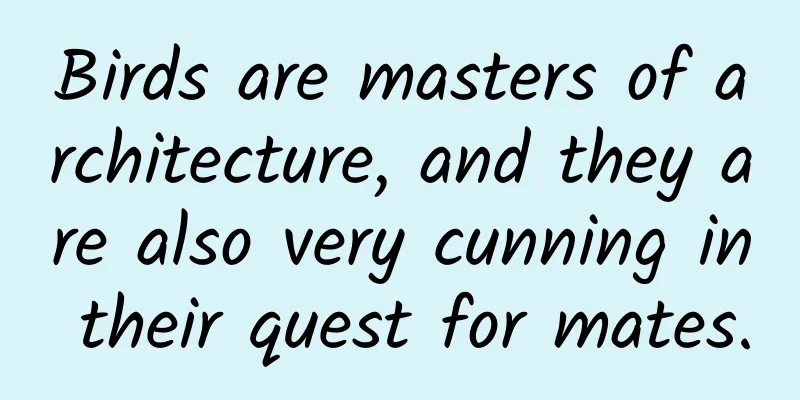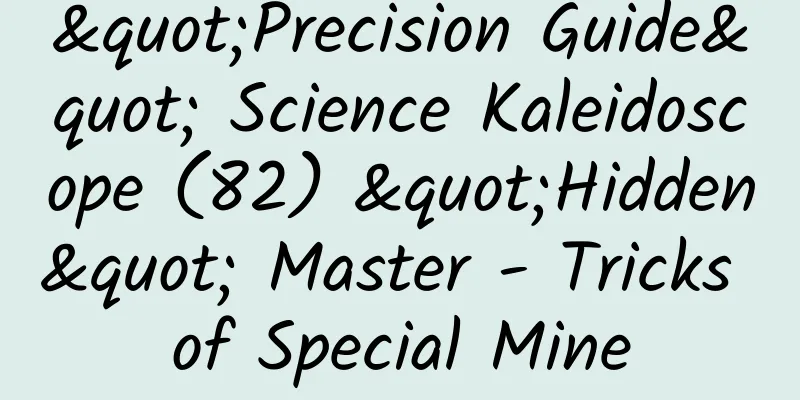Birds are masters of architecture, and they are also very cunning in their quest for mates.

|
Excellent architecture is not exclusive to humans. There are many low-key and talented architects in nature. For example, the bowerbird is a rare "master architect" in nature. Bowerbird is not just one kind of bird. The bowerbird family contains 8 genera and 20 species. Only three of these species are monogamous, or monogamous, and the remaining 17 are known or speculated to be polygynous. In the animal world, reproduction is very important, so male animals have their own way of courting mates, such as male peacocks spreading their beautiful feathers and frogs courting by calling. The bowerbird also has its own unique way of courting a mate - the courtship pavilion. The more beautiful and unique the courtship pavilion is, the greater the chance of successful courtship. However, the bowerbirds that build courtship pavilions all have polygamous couples, while monogamous bowerbirds do not build them. Could it be that these birds have mistresses in their golden houses? Bowerbird mating pavilion When the courtship pavilion built by the bowerbird was first discovered by humans, no one believed that it was a nest built by the bird, because the structure of the courtship pavilion was quite complex and the external decoration was also quite exquisite. Therefore, people initially thought that some mothers had deliberately built such a structure to coax their children. Although bowerbirds have superb construction skills, this ability is not innate. Young bowerbirds have to be "apprentices" from a young age. They will visit the courtship pavilions built by male birds and slowly learn construction skills so that they will have the confidence to attract female birds when they grow up. There is not only one style of courtship pavilions. There are tree tower type, boulevard type and shed type. There are also subtle differences in the specific forms of each style. For example, most courtship pavilions are made of grass and twigs, and some considerate bowerbirds may also put a piece of moss underneath. But when it comes to decoration, the bowerbird will look for a variety of colorful items to match its own "pavilion", including but not limited to natural petals, berries, mushrooms, etc. With the advent of man-made objects, bowerbirds have more choices, such as bottle caps, metal spoons, and colored plastics. Different birds also have different color preferences, some choose bright colors, while others use cool and subtle colors to attract the attention of their future mates. What’s even more interesting is that the attractiveness of male bowerbirds is inversely proportional to the complexity of their mating pavilions: the more attractive the bowerbirds, the more ordinary their mating pavilions. (Are they fearless because they look good??) The secret of the courtship pavilion The male bowerbird is actually a scheming bird! In 2010, John Enderle of Deakin University and his colleagues studied boulevard-style courtship pavilions. Because the courtship pavilion, which is made of branches, is symmetrical on both sides, the male bird will usually place gray and white objects (usually stones, shells, bones or artificial objects such as plastic fragments) in the pavilion. But the researchers found that this placement was not random, but rather from small to large. Male bowerbirds placed smaller objects in the direction of the entrance and larger objects farther away (in the direction of the male bird). What is the use of this? Through research, it was found that the arrangement of objects from small to large creates an optical illusion for female birds. Visual illusion is the erroneous feeling that the observer has about graphics that is inconsistent with objective facts due to the interference of objective factors or the influence of his own psychological factors. For example, if objects of the same size are placed vertically, if viewed normally, the visual effect will be that the nearby objects are larger and the distant objects are smaller. The objects placed in the courtship pavilion are arranged from small to large, that is, the size of the objects increases as the distance increases, including the male bird at the end. When the female bird stands at the entrance and holds a small object in its beak, a forced perspective is created for the entire pavilion and the male bird, making the pavilion look smaller than normal and the male bird look larger and more attractive than normal. Although some careful thought was put into it, the female bird may not have paid attention to the order in which these objects were placed or whether the male bird had become taller. She may have simply thought that one of the courtship pavilions looked better. However, the male bowerbird's use of optical illusions also makes us realize that animals are really clever, and it also illustrates a truth: when it comes to pursuing "women", males not only need hard power, but also have to spend a little time and effort. |
<<: Wonder! The sky appeared strange green. What is the reason?
Recommend
Xiaomi opens a flagship store on JD.com: no longer selling futures but spot goods?
On May 28, Xiaomi and JD.com jointly announced th...
Vice President of Product at Lizhi FM: Sharing of experience in operating UGC products
A UGC platform is an ecosystem. To develop sustai...
A brief discussion on routing and scheduling technology for computing-network integration
1. Conflict between network capacity scheduling a...
Will highways be free during the Qingming Festival in 2022? When is Qingming Festival every year? Is it the lunar calendar or the Gregorian calendar?
Qingming Festival has both natural and humanistic ...
Why cut advertising budget?
A piece of data: In the first half of 2019, adver...
How much does it cost to customize the Putian flash sale mini program? Putian Seckill Mini Program Customized Price Inquiry
The mini program provides convenience for publici...
5K iMac reveals Apple's cutting-edge technology
As the first all-in-one computer with a 5K displa...
A girl was electrocuted while charging and her internal organs were damaged. She is facing amputation. You should know the correct way to charge your phone!
Recently, a shocking electric shock tragedy occur...
Business Analysis Skills Course
Course Features 1. Aiming to "solve various ...
QQ launches youth mode for mobile version: a simpler social experience
Recently, Tencent has taken into account that sch...
How to create a bidding catering franchise account? What is structure?
[1]. Are you bidding in the catering industry now...
iOS 9 beta 3 released, full of new features
Two weeks after the release of iOS9 beta 2, Apple ...
The reward war escalates into a lose-lose game between Apple and APP developers
Following WeChat, Apple has finally taken action ...
Traffic 2.0 era: How do operators manage data traffic?
1. China Telecom’s “Flow Treasure” and China Unic...
Choosing an enterprise-level mobile platform: an independent platform or an integrated platform?
The rapid development of mobile Internet not only...









